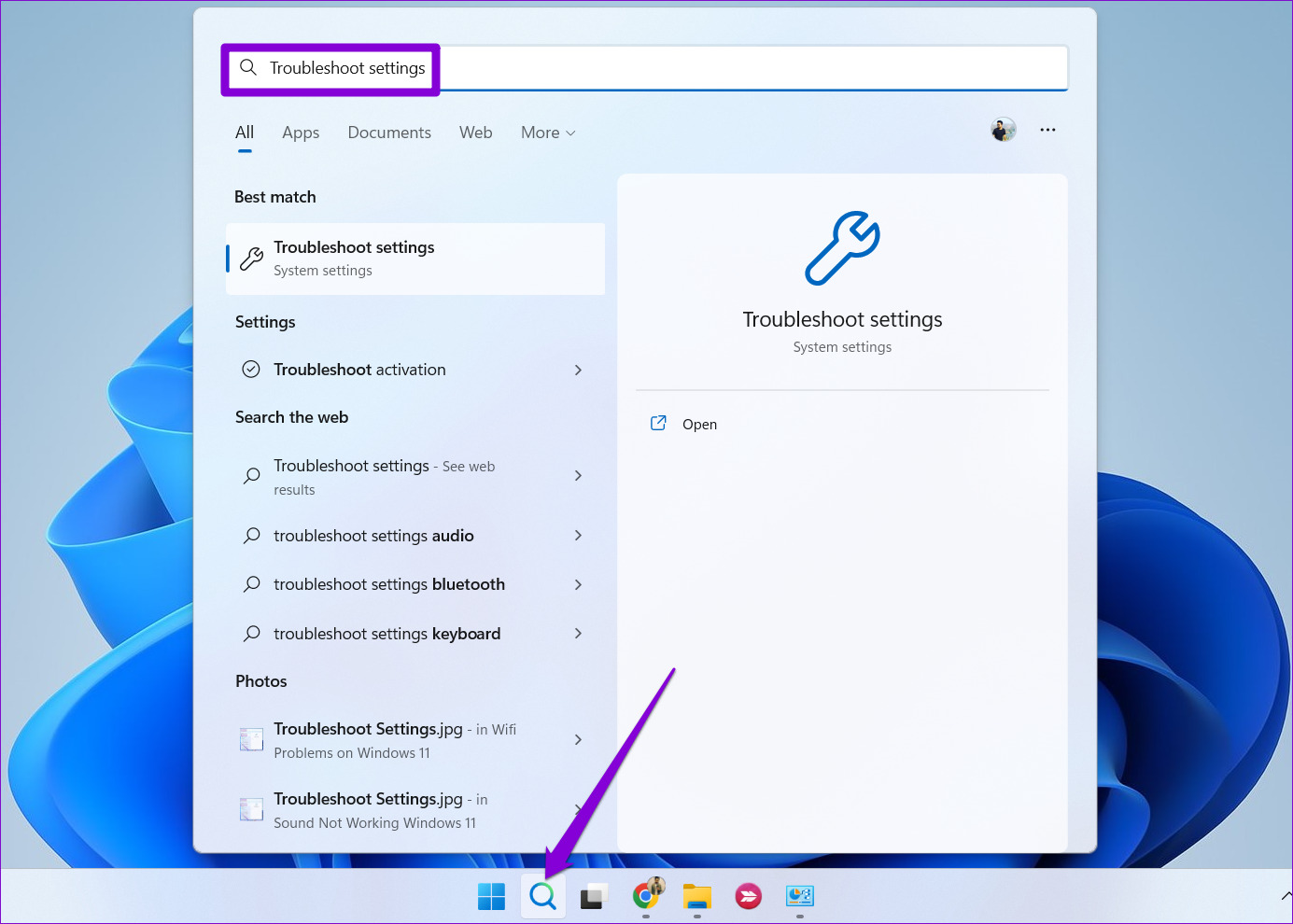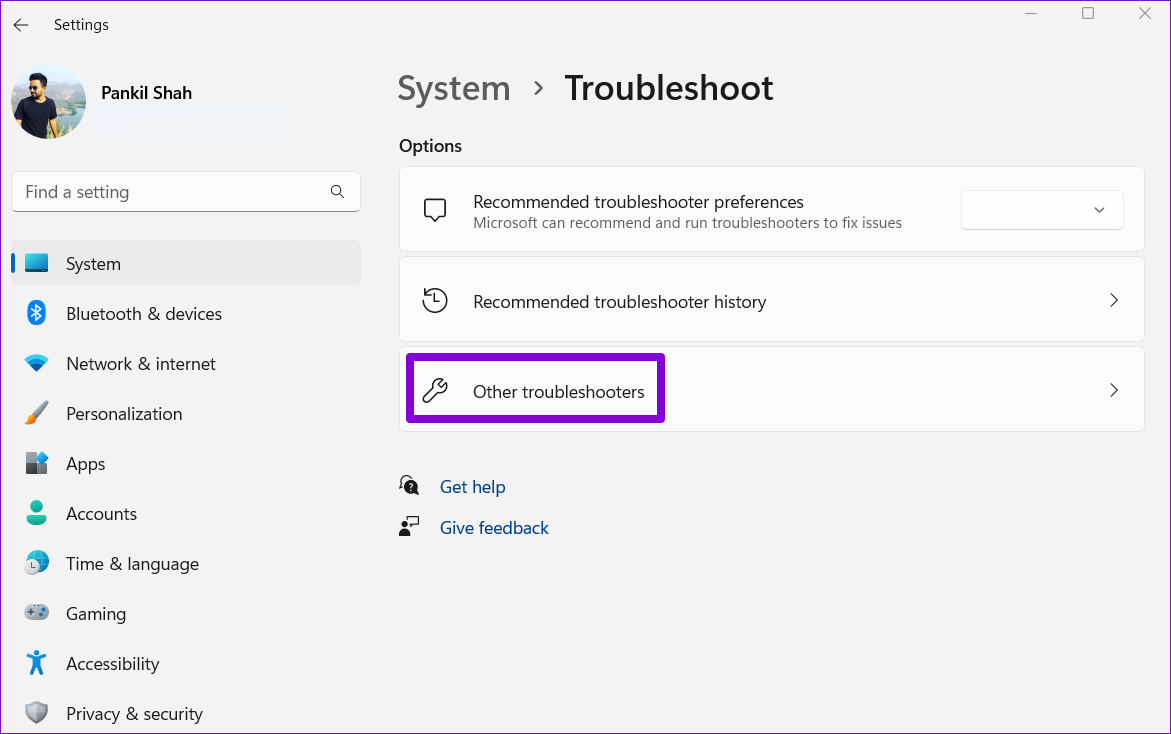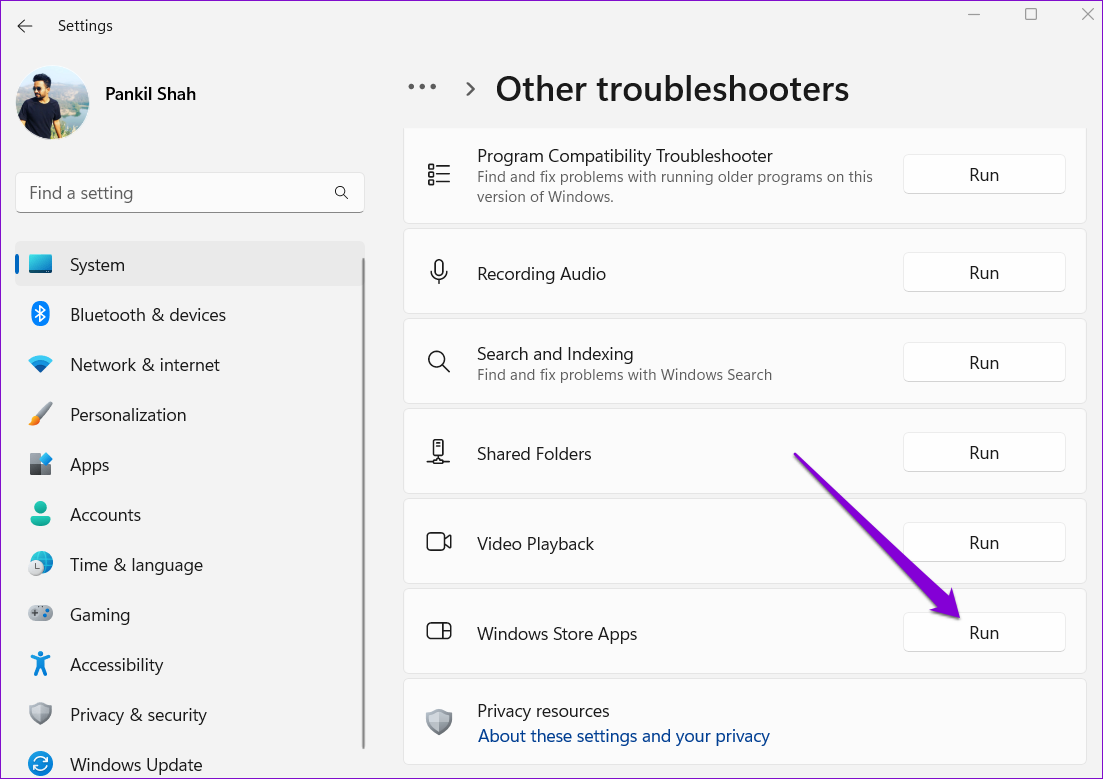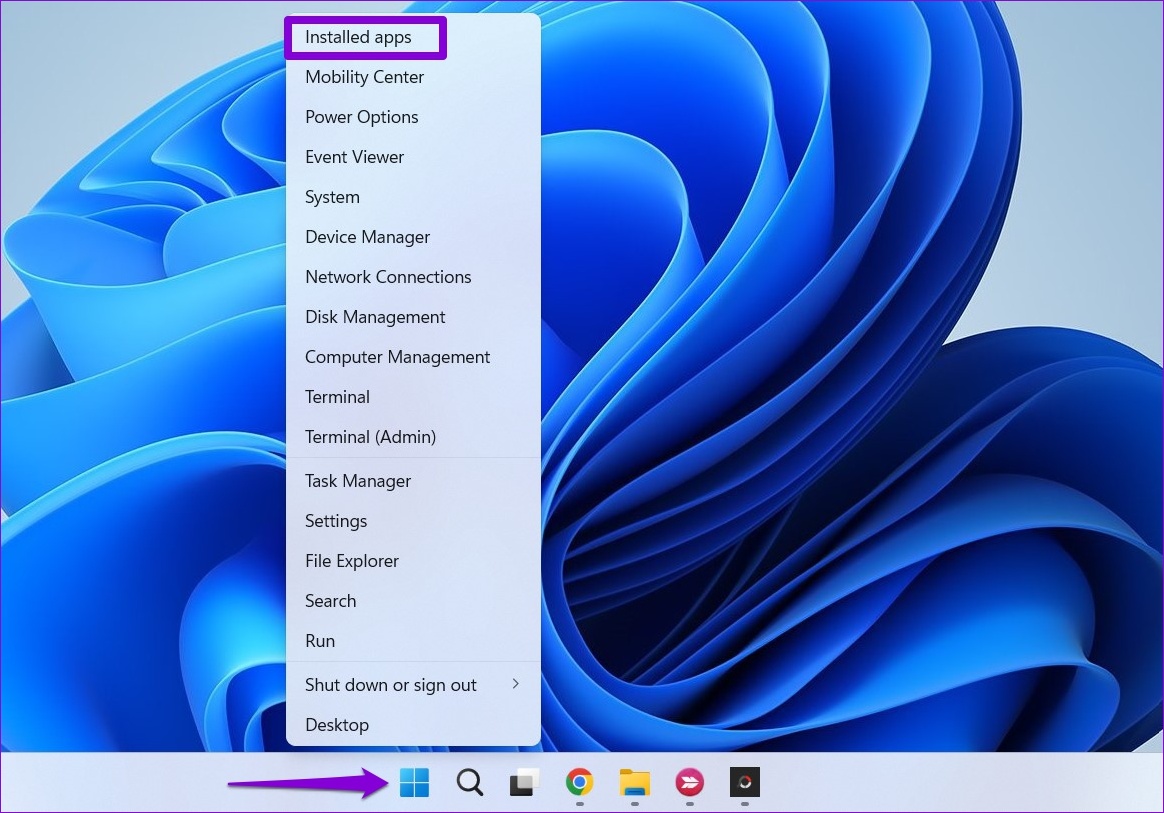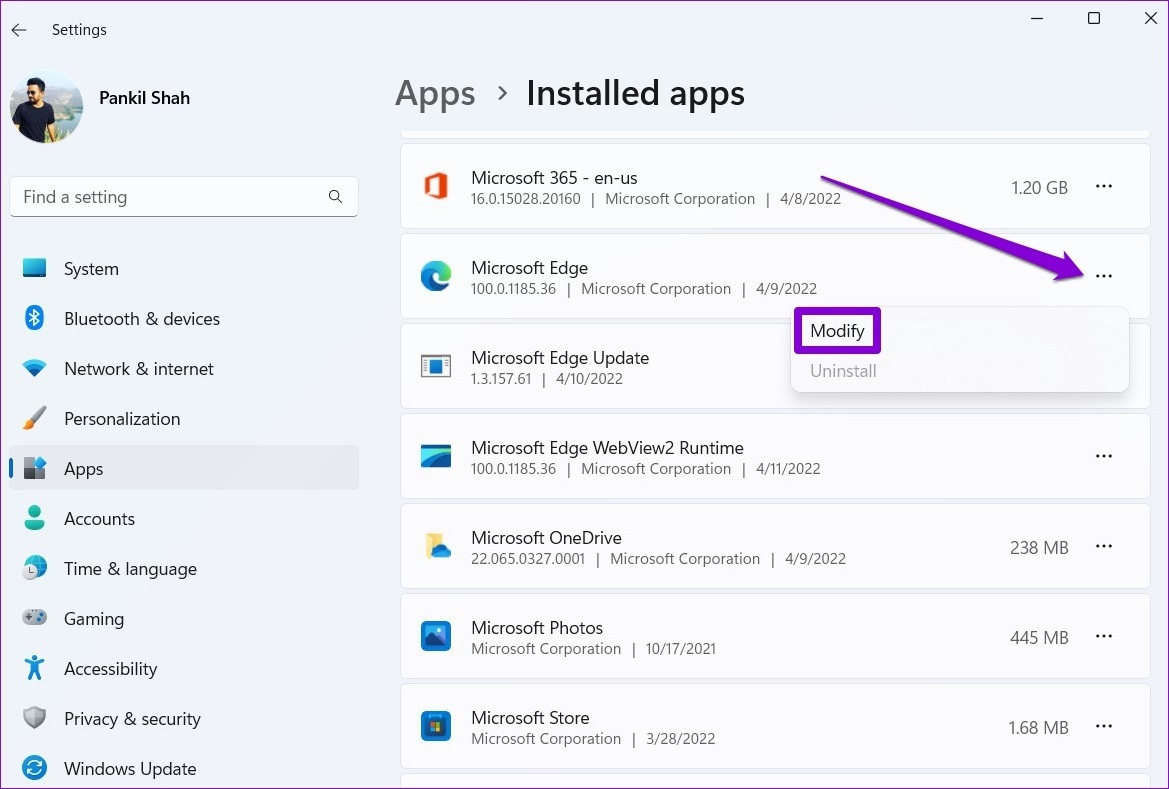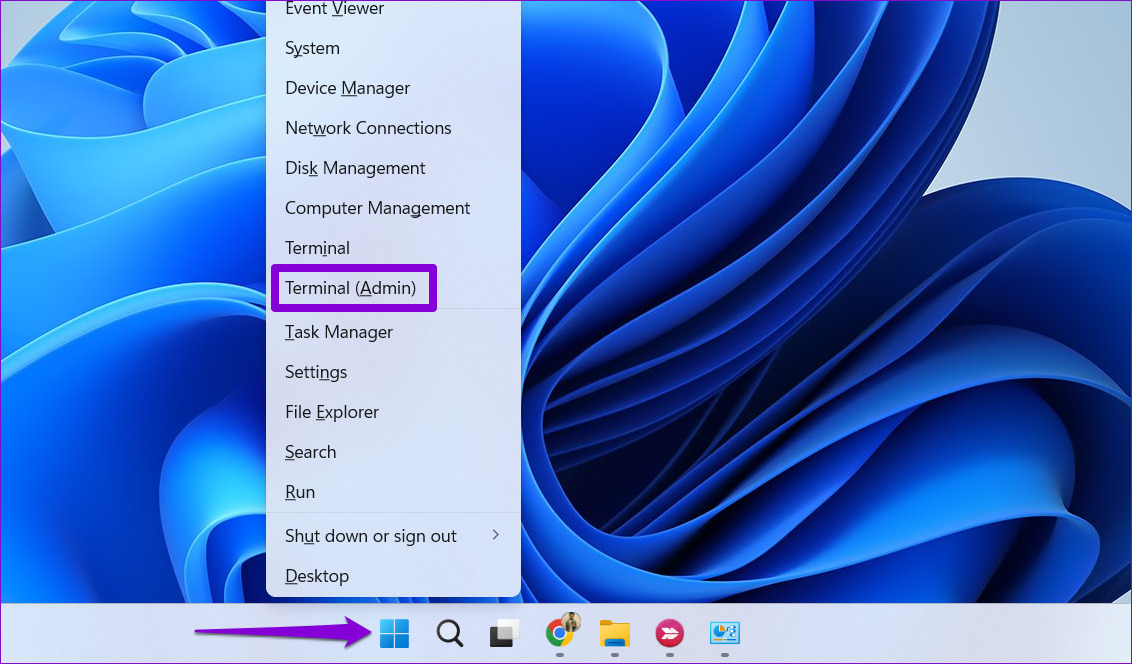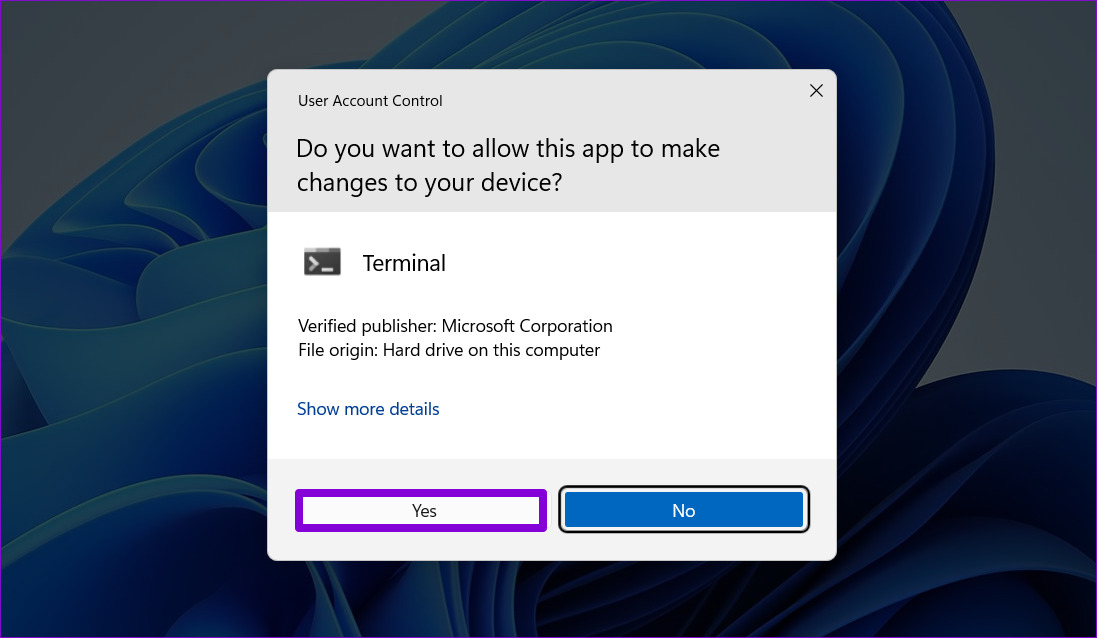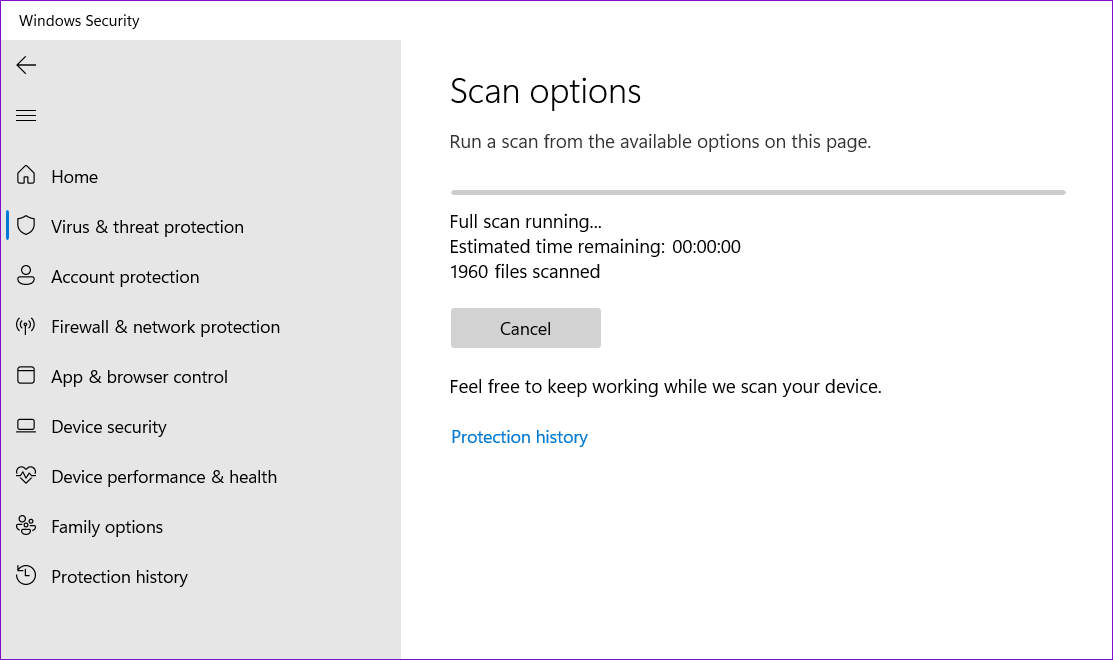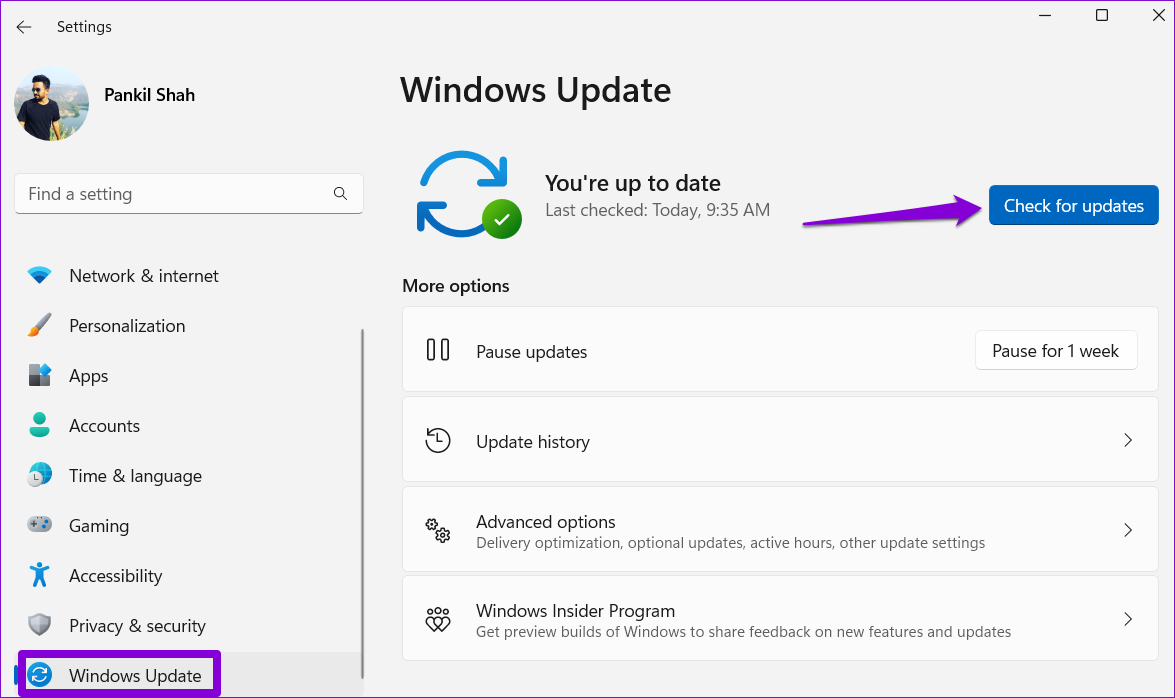Since Microsoft Edge is deeply integrated with Windows operating system, determining the exact cause of this problem can be difficult. To help you, we have put together workable methods for Microsoft Edge not opening problem on Windows 11.
1. Close Edge Processes Using Task Manager
Microsoft Edge may fail to open if some of its processes are stuck in the background. You can use Windows Task Manager to terminate any Edge processes and give the browser a fresh start. Step 1: Press Ctrl + Shift + Esc on your keyboard to open the Task Manager. Step 2: Under the Processes tab, right-click on Microsoft Edge and select End task.
Exit the Task Manager window and see if you can open Microsoft Edge.
2. Run Windows Store Apps Troubleshooter
Windows 11 includes a dedicated troubleshooter that can automatically diagnose and repair issues with Microsoft Store apps. If you’re using the store version of Microsoft Edge, you can run the Windows Store Apps troubleshooter to resolve any issues with the browser. Step 1: Click the search icon on the Taskbar, type in troubleshoot settings, and press Enter.
Step 2: Select Other troubleshooters.
Step 3: Scroll down to click the Run button next to Windows Store Apps.
After running the troubleshooter, try to launch Microsoft Edge again.
3. Update Edge From Microsoft Store
An outdated Edge build could be to blame for the browser not opening issue. Since you can not update Edge from its settings menu, you must go to the Microsoft Store. Open Microsoft Store on your computer and search for Microsoft Edge Browser. Click the Update button to install updates for Microsoft Edge. Microsoft Edge for Windows
If you do not see the Update option, then Edge is already up to date.
4. Delete Microsoft Edge User Data
Microsoft Edge may fail to open on Windows if the existing user data is corrupt. If that’s the case, removing Edge user data from your PC should help get things moving again. Step 1: Press the Windows key + R to open the Run dialog. Paste the following path in the Open field and press Enter.
Step 2: In the File Explorer window that opens, locate a folder named Default and delete it.
After deleting the user data, try to open Microsoft Edge again.
5. Repair Microsoft Edge
Your Windows 11 PC comes with a Microsoft Edge repair tool. It reinstalls Edge on your computer and resolves any issues that occur due to broken or missing program files. To repair Microsoft Edge on Windows 11: Step 1: Right-click on the Start icon and select Installed apps from the list.
Step 2: Scroll down to locate Microsoft Edge on the list. Click on the three-dot menu icon next to it and select Modify.
Step 3: Click on Repair to let Windows reinstall Microsoft Edge. Since the repairing process requires Windows to download the browser again, you’ll need an active internet connection for this to work.
6. Run SFC and DISM Scans
Corrupt system files can also prevent apps and programs from opening on Windows 11. Fortunately, Windows includes a few built-in tools, such as the SFC (System File Checker) and DISM (Deployment Image Servicing and Management) scans, that can automatically detect and repair any damaged system files. Step 1: Right-click on the Start icon and select Terminal (Admin) from the list.
Step 2: Select Yes when the User Account Control (UAC) prompt appears.
Step 3: Type in the command given below and press Enter.
After the SFC scan is complete, run the DISM scan by entering the following commands one by one and press Enter after each command.
Wait for the process to complete and restart your PC. After the reboot, try to open Edge one more time.
7. Scan for Malware
In addition to scanning your system files, you should also scan your PC for malware. To do so, you can either use the built-in Windows Security app or a third-party antivirus program you trust.
If the scan reveals anything suspicious, take the recommended steps to resolve the issue. Following that, Edge should function normally.
8. Install Windows Updates
Microsoft regularly releases updates to address any known issues with the Windows operating system. If the problem is caused by a faulty Windows build, installing newer updates will help. To check for Windows updates, press the Windows key + I to launch the Settings app. Head over to the Windows Update tab and click on ‘Check for updates’ button on your right.
Install any pending system updates and see if Edge starts working again.
Live on the Edge
Like any other browser, Microsoft Edge can also experience issues at times. However, that’s no reason to switch to an alternative. One of the solutions mentioned above should get Microsoft Edge up and running on your computer. Go through them all and let us know which one works for you in the comments below.


